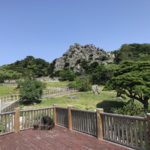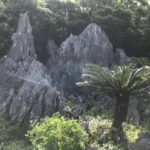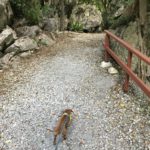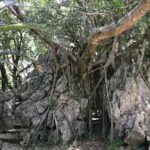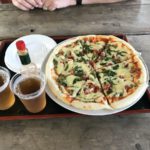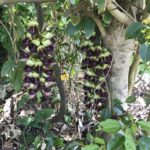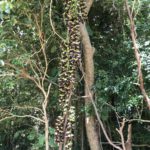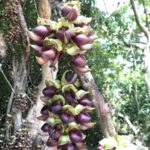Daisekirinzan park is at the very north of Okinawa main island, in Yanbaru. It is a pretty long drive from the southern part of the island… but worth checking out. One of the best parts is that this park is dog-friendly (even the shuttle bus and the cafe).
Right now the park is set to open up a new museum and facilities at the end of April (before Golden Week), and unfortunately increase the entrance fees to 1200yen per adult from my understanding. As it was we paid 820yen per adult, which is definitely not cheap, considering the best way to get here is also to take the expressway (toll road). Our dog was free though.
There are 4 different courses you can walk along (labeled with colors and easy to follow) during your time there. None of it is particularly difficult hiking, more of a leisurely nature walk. Overall each course is fairly short, none took us more than hour to complete (I think total may have been about 2.5 hours at most including both our rest breaks at the cafe, once for shiqwasa juice, and the second time for the pizza).
As you walk along the courses, there are several signs for what the rocks are shaped like (dragons, pigs, cats, etc). See if you can spot them all! It was a little bit of a game for us. Daisekirinzan is also a major power spot in Okinawa; it is located in Ashimui 安須杜, Okinawa’s oldest sacred place, supposedly be created by one of the gods. I can see why, the rocks are rather impressive in their way, and being so far out in the middle of nature, you cannot help but feel a little energized.
At any rate, our miniature dachshund had a blast trotting through the forested courses. Bigger dogs may find the walk a bit more boring, but our guy has short little legs, so pretty much anywhere is an adventure for him.
The main reason we went, actually, was for the Irukanda イルカンダ– some type of subtropical flower that is blooming this time of year. Usually these are only found fairly deep in the wilds of Yanbaru but at Daisekirinzan you can see them easily. Mostly they are found along the green trail labeled on the map (from the parking area to the park itself), so only take the shuttle bus up and walk back if you want to see these.
website link: https://www.sekirinzan.com/en/
address: https://goo.gl/maps/ybiRo7jqk1B2
